Vinegar is a simple remedy with impressive health benefits.
For centuries, traditional medicine has been using it for skin health, inflammation reduction, and even blood sugar control.1E Östman, Y Granfeldt, L Persson & I Björck. Vinegar supplementation lowers glucose and insulin responses and increases satiety after a bread meal in healthy subjects, European Journal of Clinical Nutrition volume. 2005
Vinegar foot soaks can help:
- Prevent fungal infections like athlete’s foot
- Protect you from harmful bacteria.
- Keep your skin soft and exfoliated.
- Get rid of corns and warts.
- Reduce bad smells.
Read on to learn more about the benefits of a vinegar soak and the best way to do one!
Benefits of Adding Vinegar to Your Foot Soak
Vinegar simple home treatment – it’s available in your kitchen right now!
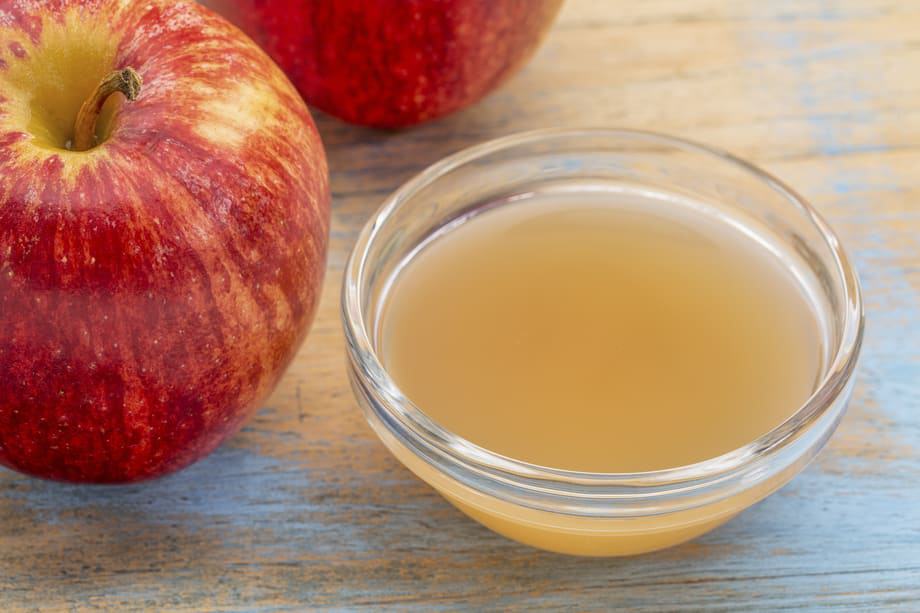
And, since vinegar is safe enough to eat, you don’t need to worry about skin irritation or other problems.
Here are some of the perks of using vinegar soaks for healthy and happy feet:
Get Baby-Smooth Feet
Vinegar is a water solution of acetic acid. Depending on the type, it has a pH of 2-3.
Since vinegar is a mild acid, it can break down dead skin cells and make your skin smoother without any rubbing or scraping.
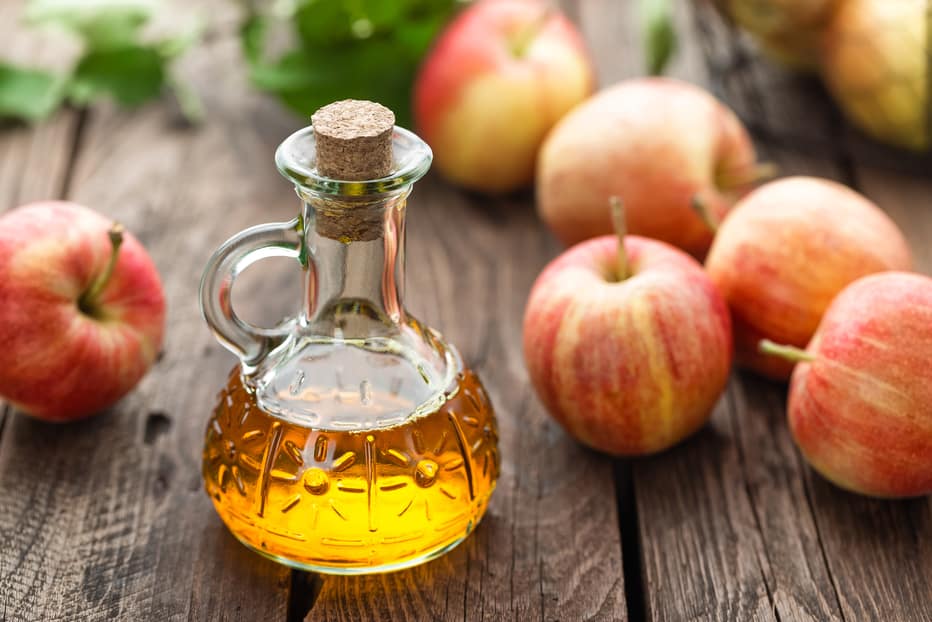
Vinegar soaks can also keep your soles soft and prevent cracks. Doing one before using a callus remover will help remove excess keratin effortlessly.
For best results, choose apple cider vinegar, which contains additional fruit acids like malic acid.
This type of vinegar has other medicinal properties like helping with weight loss and lowering blood sugar.
Prevent Infections
The acid in vinegar can kill bacteria and fungi, preventing common infections like athlete’s foot.
While household vinegar isn’t concentrated enough to kill 100% of pathogens, it’s still effective against common offenders.
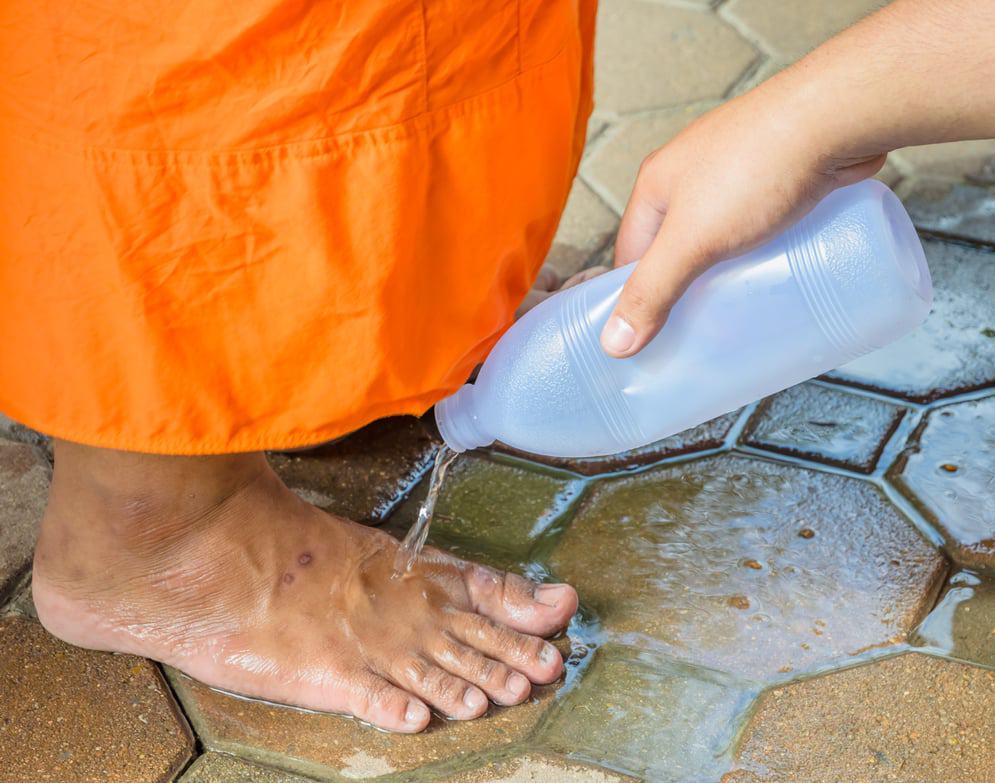
Vinegar can help keep your feet clean, healthy, and smelling good.2Fenella D. Halstead, Maryam Rauf, Naiem S. Moiemen, Amy Bamford, Christopher M. Wearn, Adam P. Fraise, Peter A. Lund, Beryl A. Oppenheim, and Mark A. Webber. The Antibacterial Activity of Acetic Acid against Biofilm-Producing Pathogens of Relevance to Burns Patients, PLOS One. 2015
Does Vinegar Kill Fungus?
Fungi thrive in warm and humid areas. You can contract a fungal infection by direct contact; if you share towels or beauty tools; or by walking barefoot in moist areas. Unfortunately, your feet are the perfect growing environment for fungi.
Athlete’s foot, also known as tinea pedis, is one of the most common and unpleasant forms of mycosis. Symptoms include itching, burning sensation, dry and cracked skin, as well as painful blisters.
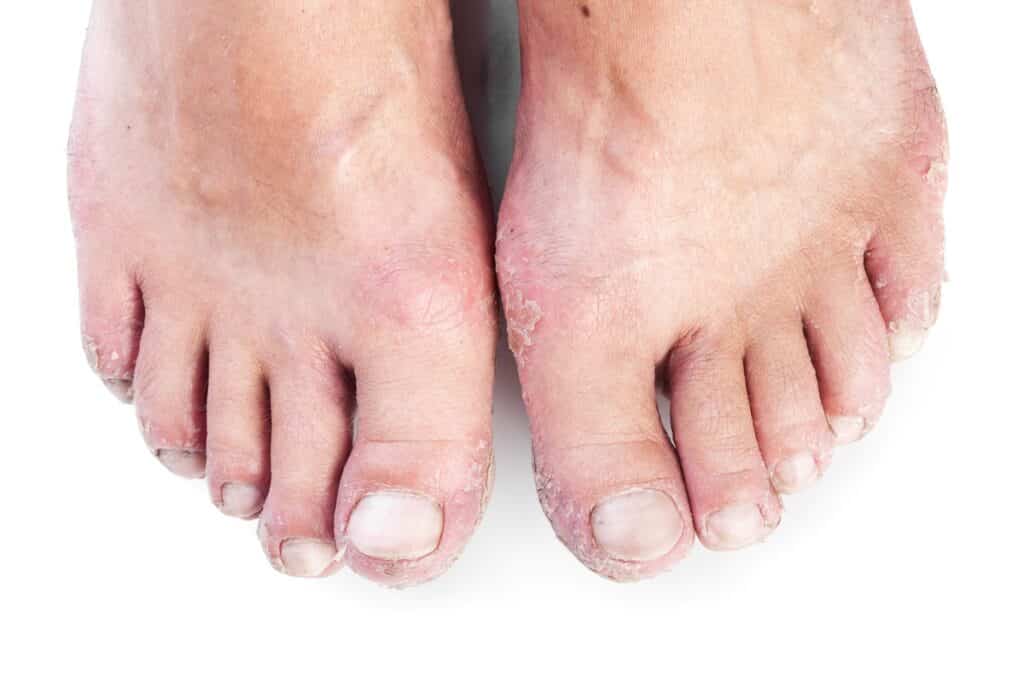
Vinegar soaks can help prevent athlete’s foot by keeping your skin clean and exfoliated. But, if you already suffer from a fungal infection, consult your doctor for the best antifungal medication to use.
Toenail fungus is another frequent fungal infection that is notoriously hard to treat. Using a vinegar foot soak daily can slow fungus growth and help you eliminate the unsightly mycosis. Once again, though vinegar has antifungal properties, it’s best to use a pharmaceutical product as well.
Vinegar is an excellent option for preventing fungal infections. But, if you’re already dealing with fungus on your feet, talk to your doctor for additional treatments.
Get Rid of Foot Odor
Your feet smell after a long day because the sweat buildup has attracted bacteria. Then, bacteria break down sweat into acids, which cause the foul odor.
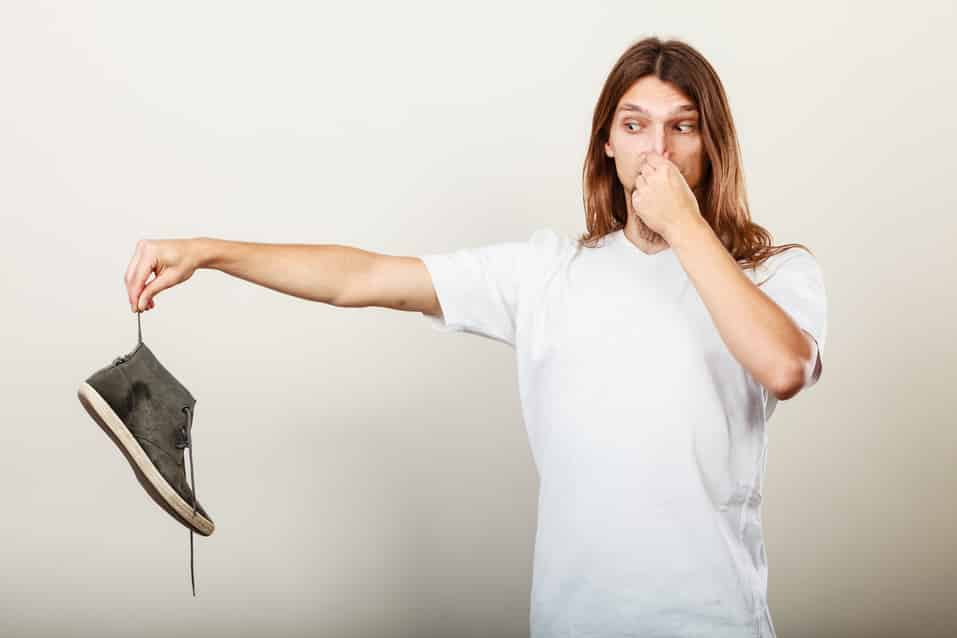
A vinegar soak is a simple and effective solution to smelly feet. The cleansing properties of vinegar prevent bacterial overgrowth and keep nasty odors at bay.
Risks & Side Effects of a Vinegar Foot Soak
Vinegar is generally safe to use on skin. While it is an acidic solution, it’s also mild enough to ingest. On healthy skin, especially the thick coat of your feet, vinegar is unlikely to cause any problems.
However, acids can strip the natural oils of your skin. If you’re suffering from scaly, peeling skin, vinegar isn’t the best option. To prevent it from drying your skin, dilute vinegar in a 1:2 ratio when you start doing foot soaks.
Don’t use vinegar on any cuts, bruises, or other skin injuries. The acetic acid can make the inflammation worse or even cause chemical burns.
How to Do a Vinegar Foot Soak
Here’s the simplest way to do a vinegar soak:
- Clean your feet thoroughly with a mild soap. Pay special attention to the space between your toes, where sweat and dead skin tend to build up.
- Pour 3 cups of apple cider vinegar to a clean basin.
- Add 6 cups of water to dilute the acid. Make sure you have a clean, natural-fiber towel on hand.
- Soak your feet for 10-20 minutes. Take them out if you feel any itching or irritation.
- Dry your feet thoroughly before putting on socks and shoes.
Vinegar + Essential Oils
Elevate your foot soak recipe by adding your favorite essential oils. If you struggle with fungal infections, consider tea tree oil. Research has shown it’s effective at killing the fungus that causes athlete’s foot and toenail fungus.3F. C. Flores, J. A. de Lima, R. F. Ribeiro, S. H. Alves, C. M. B. Rolim, R. C. R. Beck & Cristiane Bona da Silva. Antifungal Activity of Nanocapsule Suspensions Containing Tea Tree Oil on the Growth of Trichophyton rubrum, Mycopathologia. 20134Syed TA, Qureshi ZA, Ali SM, Ahmad S, Ahmad SA. Treatment of toenail onychomycosis with 2% butenafine and 5% Melaleuca alternifolia (tea tree) oil in cream, Trop Med Int Health. 1999
Vinegar + Hydrogen Peroxide
While some tutorials suggest hydrogen peroxide, it’s best to avoid mixing this chemical with vinegar. At low concentrations (like a foot soak,) hydrogen peroxide and vinegar can enhance each other’s effects. But, they also react to produce dangerous peracetic acid. Even if that’s unlikely in household concentrations, the combination can dry and irritate your skin, making it more susceptible to infections.
Vinegar + Baking Soda
Baking soda is a base. Combining it with an acid like vinegar causes the mixture to bubble up and neutralize. So, there’s no use in putting baking soda in your vinegar soak.
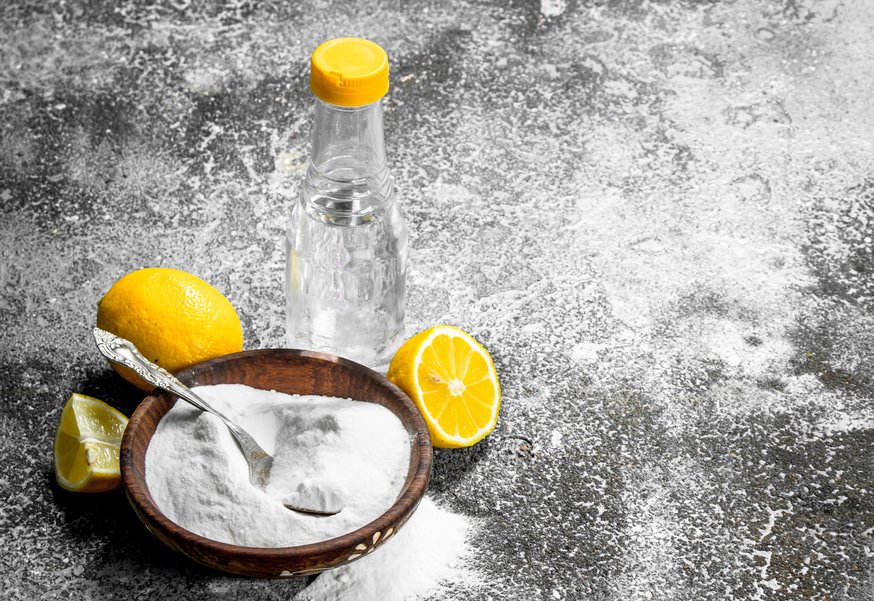
Instead, try a baking soda rub after the soak. It will help reduce excess acid and break down dead skin cells to give you even smoother skin.
Vinegar + Epsom Salt
Epsom salt has several foot-friendly benefits of its own. It can help with fungus; reduce the pain of corns, warts, and cracked heels; reduce inflammation; remove splinters. Add a ½ cup to your next soak to amp up the benefits.
Can You Reuse Apple Cider Vinegar in a Foot Soak?
Apple cider is a pricier vinegar variety. But, saving a buck by reusing your soak water is a recipe for disaster. Since vinegar isn’t a 100% disinfectant, some of the debris, bacteria, and fungi from your feet will stay in the soak. That’s why it’s best to throw out the water after ever every soak.
After the Vinegar Soak
A vinegar soak can solve a lot of typical foot issues. Here’s how to follow it up for best results:
- Use a callus remover to get rid of excess dead skin and prevent painful cracks.
- Dry your feet thoroughly, paying particular attention to the space between your toenails.
- Moisturize with a rich cream to replenish your skin.
- Throw on some natural-fiber socks or walk barefoot at home to give your feet room to breathe.
Have you ever tried a vinegar foot soak? What’s your favorite recipe for some foot TLC? Let us know in the comments below!

Very informative